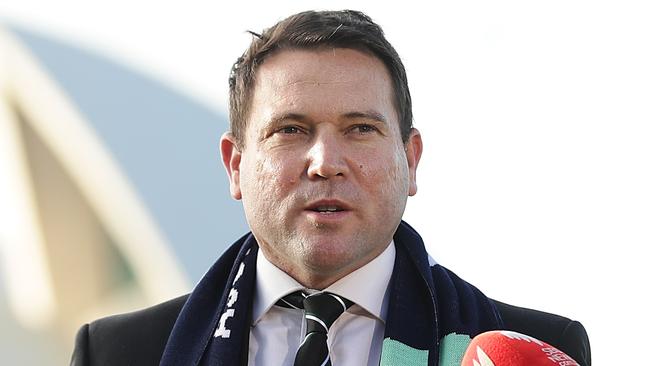FFA takes big revenue hit and $2m loss as cost of Covid hits home
Soccer’s governing body had to make big cuts as COVID hit the A-League and income from hosting international matches dried up

Football Federation Australian has slumped to a multi-million-dollar loss and suffered a revenue fall of almost 20 per cent as the cost of disruption to the sport during COVID-19 hit home.
Accounts lodged with the corporate regulator show FFA recording a $1.8m loss in 2020 from revenue of $107m, in a year in which football’s governing body had to suspend the A-League at the height of the pandemic.
There were no international matches, which are normally a major source of income, and the A-League finals series was played out before reduced crowds after the end of the financial year. The accounts show how fragile the financial situation for a second-tier sport such as soccer can be.
Even the biggest codes such as AFL, NRL and cricket, as well as rugby union, have been forced to cut costs during the pandemic and borrow money as revenues dry up and sports have had to make do with less broadcast income while playing matches in mostly empty stadiums.
The FFA accounts cover the 12 months to June 30 and compare with a 2019 financial year in which FFA recorded a small $435,000 surplus from $132m revenue, meaning its financial result for 2020 was $2.2m worse off and revenue fell about 18 per cent.
The biggest hit to revenue was in sponsorship, which fell 25 per cent to $21m in a year when the Socceroos lost major partner Caltex, which has yet to be replaced, and other sponsors such as NAB, Aldi, Bet365 and Harvey Norman have also left the sport. A-League major sponsor Hyundai has also ended its 15-year partnership, and Qantas will scale back its sponsorship but remain a travel partner.
FFA chief executive James Johnson told The Australian that the organisation had to quickly manage the implications of the pandemic, which at one stage included having 70 per cent of FFA staff stood down.
“From a strategic and financial perspective, our focus as an organisation was to respond to the COVID-19 pandemic in a fiscally responsible manner by carefully managing the impacts on revenue and at the same time managing the costs so that the organisation could be well positioned as we entered the recovery period.”
FFA was able to cut more than $20m from its cost base, with travel, marketing and employee wages expenses taking a particular hit. The body also did not need to borrow money from its world body, FIFA, a move that Rugby Australia has had to make.
The financial report was the last of an era in several ways. David Gallop left the organisation at the end of December after about seven years in the role to be replaced by Johnson as CEO, and the report will also be the last full year that FFA had full control over the A-League after it was established 15 years ago.
It means FFA’s next financial report will begin to look markedly different, with A-League club owners having recently struck a deal to separate the league from the governing body.
While there will be a period of transition, clubs will have strategic and most of the fiscal control of the league and FFA will mostly generate its own income from the Socceroos and Matildas.
FFA will also maintain regulatory oversight of the A-League, which is set to begin in late December under a revised one-year broadcast deal with Fox Sports worth about half of the previous contract.
FFA will in the next few years also look to derive more financial value from the Matildas after winning joint hosting rights with New Zealand for the 2023 Women’s World Cup.
While FIFA will control much of the revenue and spending for the tournament, FFA should gain more sponsors and government funding before and during the event.
Johnson said the winning bid “will have an everlasting legacy for the sport” and that FFA was also focused on more significant and ongoing cost savings, while also being poised to announce new commercial deals later this year.



